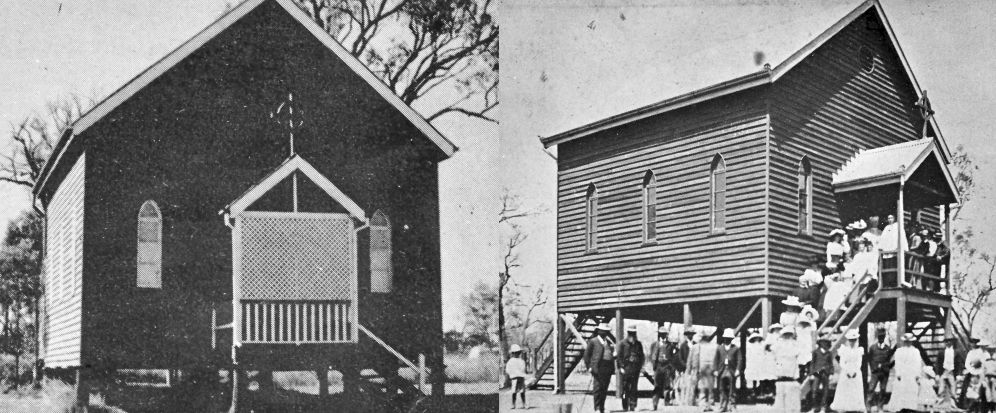The above composite image is of what has been identified as the Duaringa Roman Catholic Church building from the early 1900s. While they are designed the same, they are not the same building. What follows will explain that.
When Queensland’s population was growing and expanding to different parts of the state during the 1800s, building a railway corridor was vital.
As the lines snaked west of coastal areas, villages sprung up in various places.
By 1874 the Central line from Rockhampton reached the Dawson River where a village that was named Boolburra (meaning Big Water) was established partly to service the workers who built the bridge across the watercourse.
Seven miles (11km) away on much higher ground, another town, Duaringa, also came into being as the railway line crept further west.
Eventually, farmers and graziers established properties and the population continued to grow. Along with more people came public buildings such as churches.
When the Duaringa State School marked its centenary in 1979, it published a history with several historical images including what was identified as St Kevin’s Catholic Church.
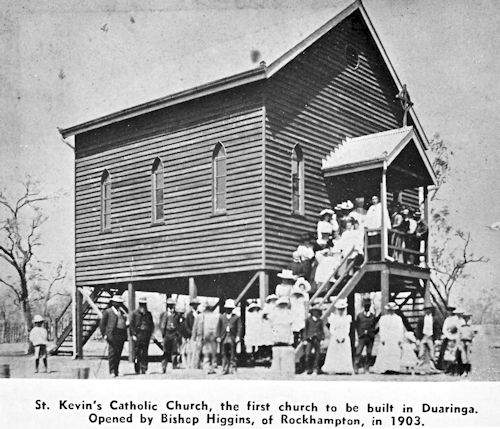
The caption identifies this building as the Duaringa Roman Catholic church. However, this is the church building at Boolburra.
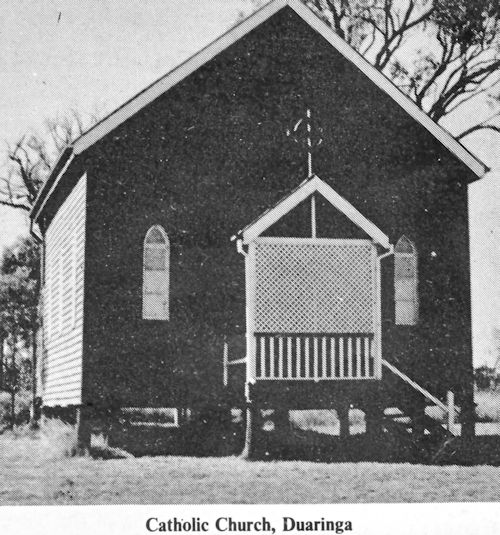
Image from Duaringa Shire 100 years of Local Government published in 1981 of what is correctly identified as the Duaringa Roman Catholic church.
When compared with another image identified as the Duaringa church, the two buildings are clearly not in the same location as one is on much higher stumps.
Local knowledge
Former Boolburra resident Olive Smith (nee Hammond) recalls helping to paint the Duaringa Roman Catholic church building.
She understands that the church was always on low stumps.
The Hammond family property was a couple of miles from Boolburra. The Dobbs and Hammond families still have close ties.
Flood damage
The building on the higher stumps is therefore at Boolburra and was so constructed to account for the flooding that several times impacted the structure.
There’s an account from the 1875 flood that the church building was wholly covered. It supposedly had a spire that was dislodged by a rescue boat.
However, is the pictured building the same as it was back in 1875?
At least one of the pubs was washed off its base in 1875 as The Rockhampton Bulletin reported:
During the flood, one building, Mr. Davis’ new public-house, was carried off the blocks on which it stood, and after sailing fifty yards down stream, ignominiously collapsed. Had it been properly secured to the blocks it would would have remained uninjured, but now not a timber of the structure is visible.
This flood seems to be the highest in the past 150-plus years based on anecdotal accounts and the Bulletin report:
The height of the flood may be imagined when our informant states that he saw the carcass of a pair of yoked bullocks suspended in a tree fully fifty feet above the present level of the river.
Ballard’s account
The noted railway builder Robert Ballard who witnessed the 1875 event first-hand published an excellent account of the Dawson River flood 10 years later. His description includes the following statement:
At the time of the flood there was a new and busy township on the eastern side of the river called Boolburra. This township was submerged nine feet. An older township on the western side of the river was thirteen feet below flood level.
It could be concluded from this that every building was underwater. Ballard further wrote:
The terror of the scene during the flood was much increased by the agonising cries of the cattle, as they floated by hundreds down the river, and after the flood was over many of them hung in the high forks of the trees, until the flesh dropped off their bones, and their skeletons rattled to pieces in the sun.
For those of who have seen more recent Boolburra flood images, it’s hard to imagine just how the 1875 level compares with 1918.
However, the following image has the 1918 level marked on the water tank. The church building can be seen in the background and may have been covered in that event.
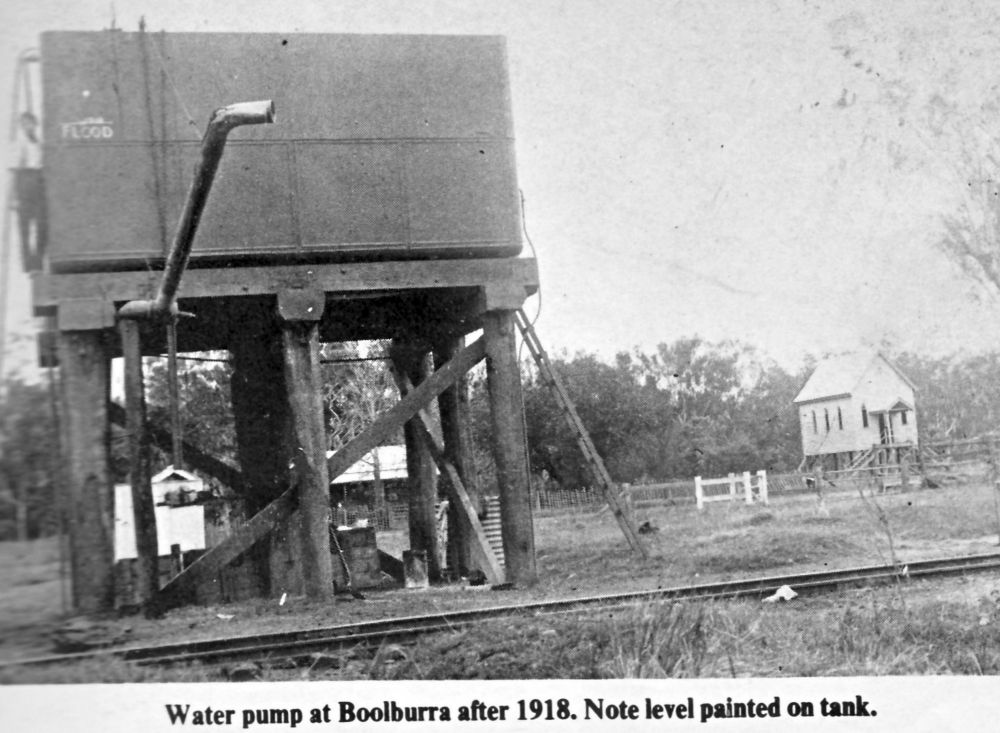
One of the holding tanks that supplied water to steam trains at Boolburra. The church building is in the background.
How the building has changed
The following images show how the old church has been developed.
Occasional church services were held after it became the Dobbs family home.
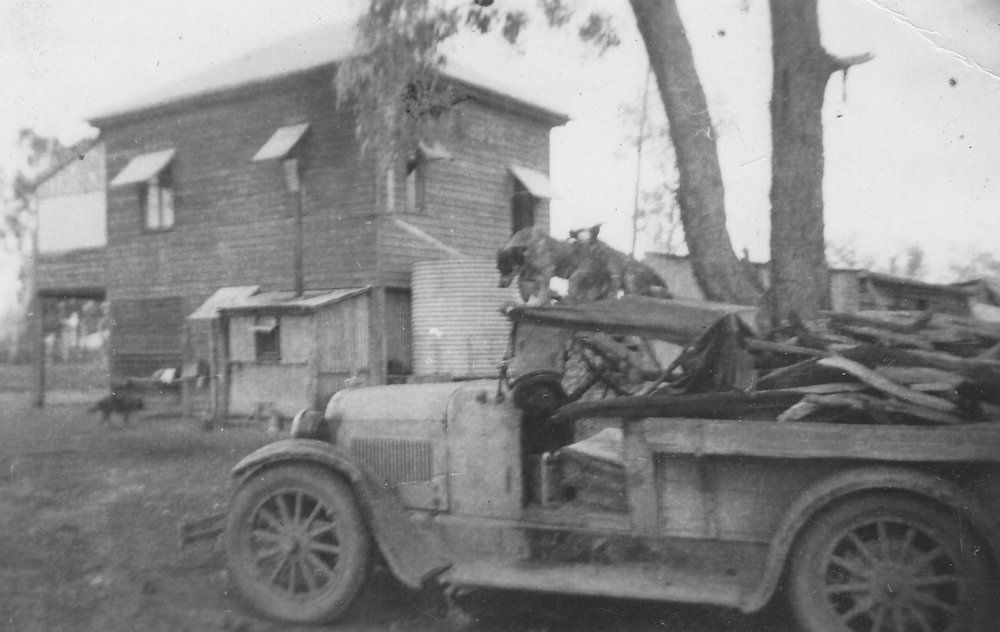
The former Roman Catholic Church building at Boolburra during the 1930s before the verandahs were added.
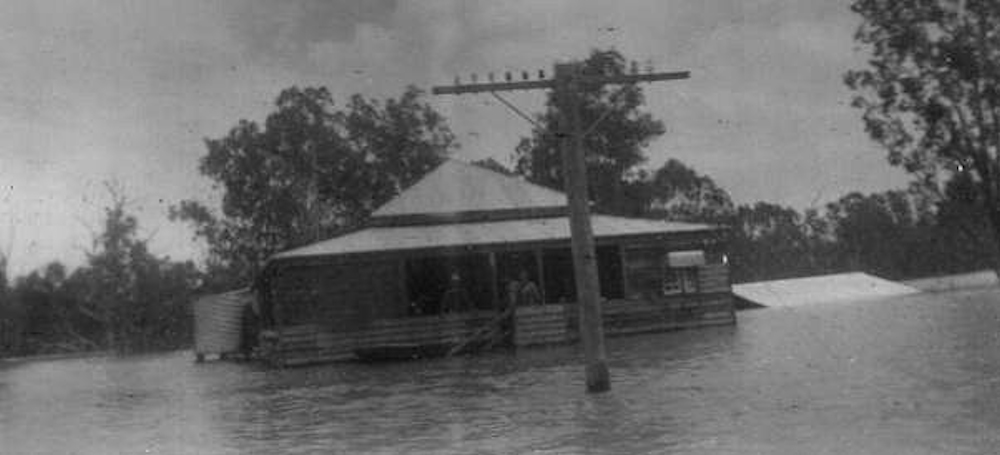
Boolburra during the 1954 flood event. The Dobbs family moved in to the old church in 1929 and, from 1948, it was radically remodelled.
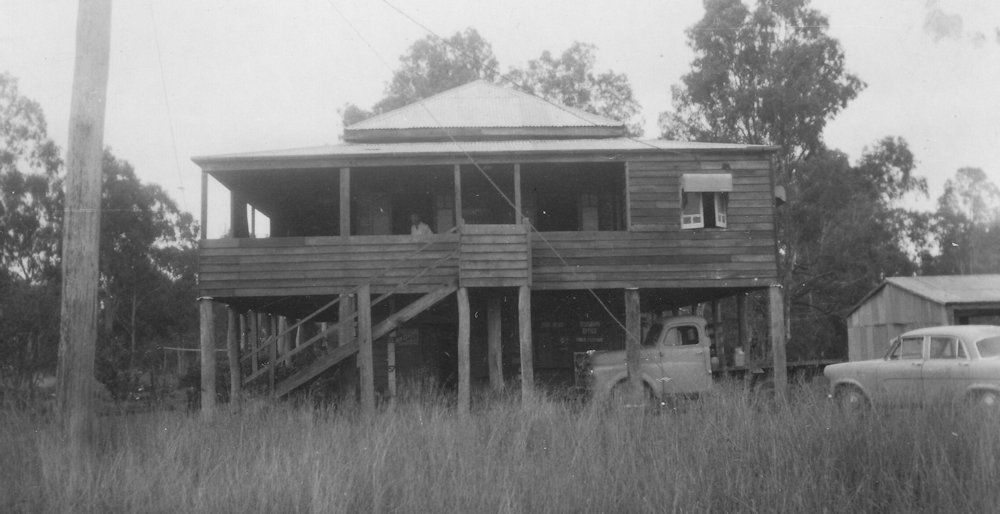
The Boolburra house most likely around 1960.
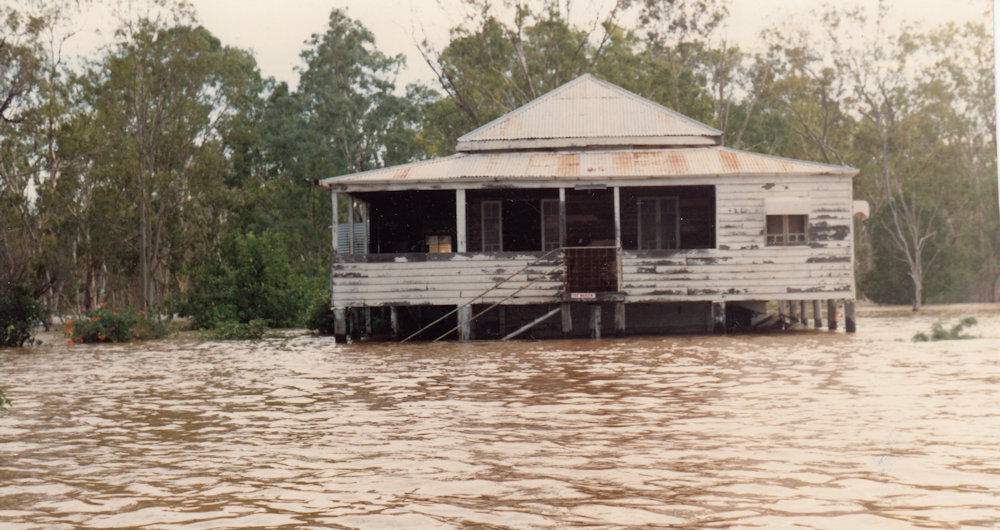
The Boolburra house during the 1991 flood. After this event, Jim Dobbs had the building moved to higher ground on the Avondale block about 2km away.
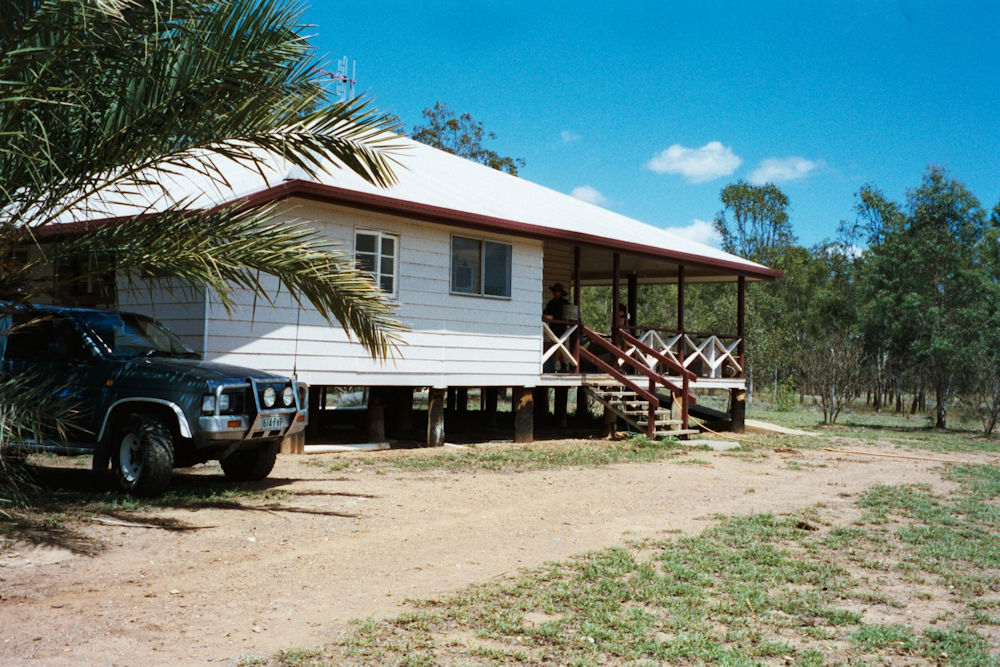
The Boolburra house at Avondale in 2003.

